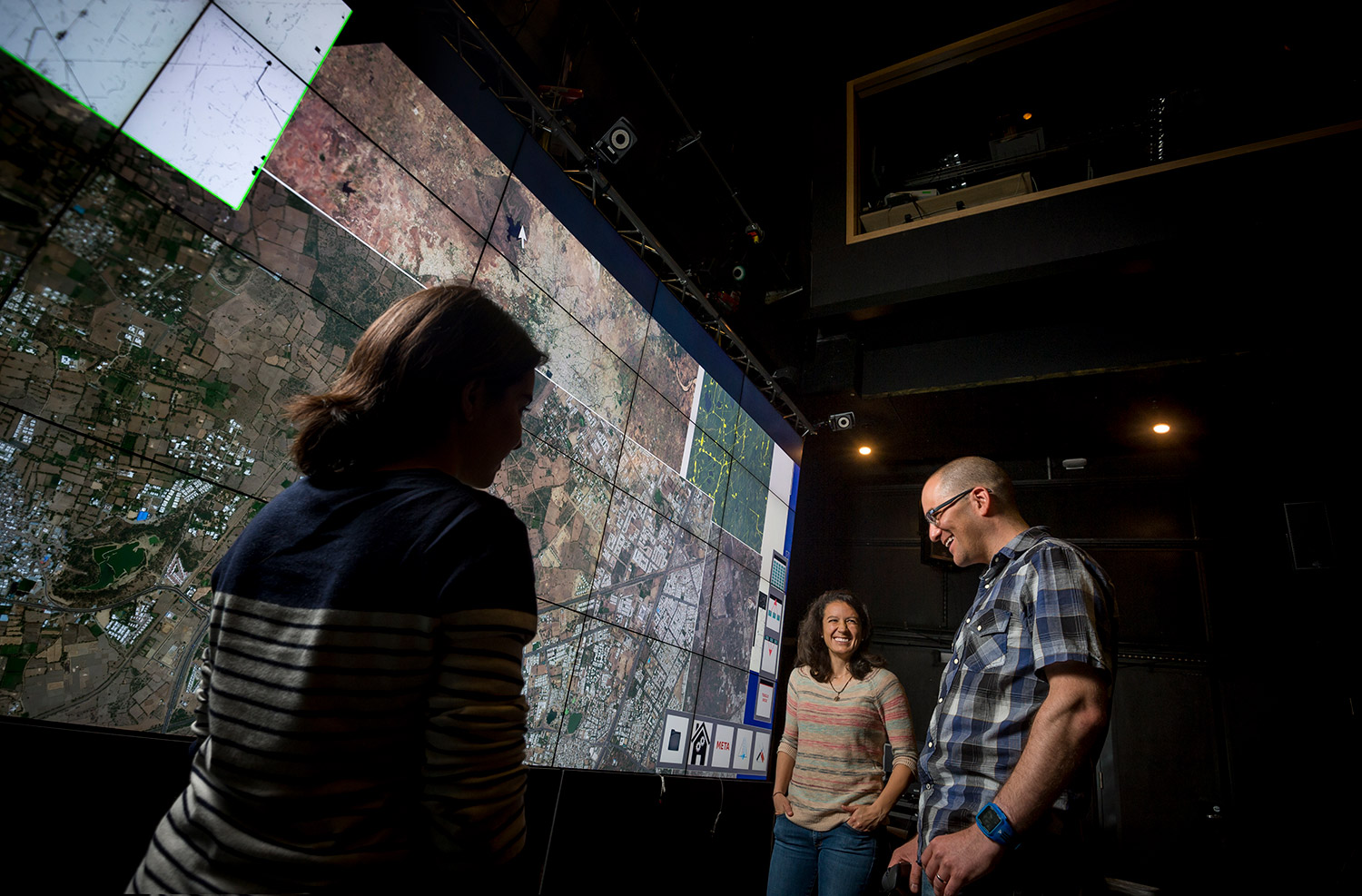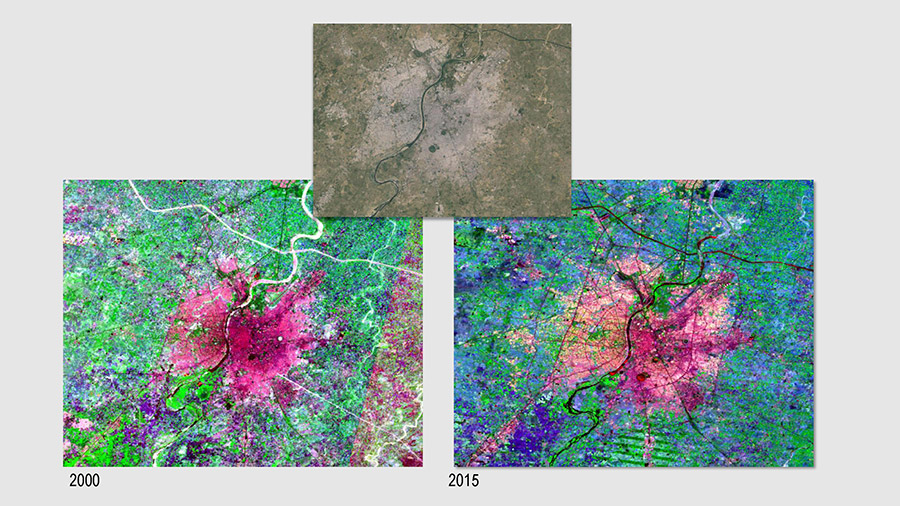Big Pixel Initiative Develops Remote Sensing Analysis to Help Map Global Urbanization
By Anthony King
San Diego, Calif., Sept. 8, 2016 — Researchers at University of California San Diego’s Big Pixel Initiative – which is based at the Qualcomm Institute – are using unique tools to map urban areas around the globe, potentially revolutionizing large-scale analysis of urbanization. Using Google Earth Engine, they developed and tested new machine-learning approaches that use high-resolution satellite data to detect and map settlements around the world.

These methods, detailed in the paper “Detecting the Boundaries of Urban Areas in India: A Dataset for Pixel-Based Image Classification from Google Earth Engine,” will eventually allow for the creation of a high-resolution map of all inhabited locations and for a better understanding of how cities expand and evolve. They provide, for the first time, a reliable and comprehensive open-source data for detecting and mapping urban areas through satellite images.
The paper appears in the August 2016 issue of Remote Sensing, one of the top peer-reviewed journals on satellite-based research. Authors are Big Pixel Initiative researchers Ran Goldblatt and Gordon Hanson of the School of Global Policy and Strategy, with UC San Diego Department of Economics doctoral candidate Wei You and Amit K. Khandelwal of Columbia Business School at Columbia University. The Big Pixel Initiative is led by Hanson and Qualcomm Institute research scientist Albert Yu-Min Lin.
With the hope to provide a tool that can identify urbanization and industrialization to other researchers, the authors found there is currently no reliable open-source dataset to automatically detect urban areas and to validate the existing maps that currently exist. They explain that urbanization is a fundamental force that shapes almost all dimensions of the modern world, from land cover and land use around cities to economics and policy making. However, the rate and magnitude of these changes have not yet been mapped globally with sharp precision.

“With the availability of cloud-based platforms such as [Google Earth Engine], it is now feasible to monitor urbanization in multi-spatial and temporal resolutions and to understand urban dynamics globally,” the authors write. These platforms allow researchers to analyze geospatial data and to understand the rate and magnitude of urban growth, especially in regions and countries where maps of urban areas do not exist.
“Ours is the first to provide comprehensive open-source ground-truth data that can serve as a training set for supervised classification of built-up land cover,” they write. “Understanding the various ecological, environmental, social and economic impacts of these processes is essential for the preservation of a sustainable human society.”
Goldblatt and the team constructed a unique dataset of 21,030 manually classified image samples representing different forms of built-up and not built-up land cover in India. These samples were then used for supervised image classification designed to detect urban areas, performing the analysis in cloud-based Google Earth Engine. Their goal in part is to use high-resolution satellite-data to create a continuous map of the urbanization process: for the first time looking extensively over time and over large-scale areas.
“Expanding this research frontier creates an urgent need for ground-truth data that can facilitate the development of supervised machine-learning algorithms and enable reliable evaluation and validation,” they said. Although this research was designed to detect urban areas in India, the methodology can easily be applied to other countries and regions, and will have impacts for governments, policy makers, business and property development as well as humanitarian and environmental workers.
.jpg)
Founded by Hanson and Albert Yu-Min Lin of the Qualcomm Institute, the Big Pixel Initiative’s mission is to develop advanced geospatial capacity to address the world’s greatest challenges. The initiative was launched in 2015 by unique, two-year access to DigitalGlobe Foundation data, and then expanded to include analysis on the Google Earth Engine platform.
In working with geoscientists across campus and experts at Google, Hanson is leading the university’s efforts to measure urbanization worldwide using satellite imagery. “We want to be able to measure how cities grow and expand on the whole planet as closet to real time as we can, by using the vast amounts of satellite imagery that are coming online,” Hanson said.
“Detecting the Boundaries of Urban Areas in India” is funded in part by the School of Global Policy and Strategy’s Center on Global Transformation. Additional remote-sensing research for the Big Pixel Initiative includes measuring land degradation in the semi-arid tropics, coral bleaching quantification, and mining activity linked to forest cover loss, among others.
Media Contacts
Anthony King
(858) 822-7824
anthonypking@ucsd.edu
Tiffany Fox
(858) 246-0353
tfox@ucsd.edu
Related Links

